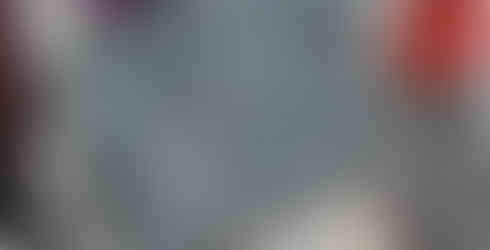The Vacation, Part 2: Station Wagons Are a Thing
- Franklyn Thomas

- Jan 4, 2022
- 4 min read
The day after Thanksgiving, we said goodbye to the New York area and hopped the pond to Germany and all the winter-themed wonder therein. Except, I’m not really built for winter things like skiing or snowboarding. But I do love Christmas, and Christmas markets in Germany are super popular.
We landed in Frankfurt and the in-laws greeted us warmly. It was the first time we’d seen them since the summer, and as I watched Robyn’s joy at seeing her parents again, I found myself being very appreciative that I have in-laws that I like. I’ve known too many people and heard too many stories about people who can’t say the same. Robyn’s parents were gracious enough to not only pick us up at the airport hours before dawn, but they did a lot of driving on our behalf and let us stay in their guest room. Appreciation isn’t enough of a word.
We drove to their home in Wiesbaden, with her dad pointing out to me that the highway system used speed limits more as a gentle suggestion than a hard rule. The limits were posted by lanes, and on the 3-lane highway from Frankfurt, the middle lane had a speed limit of 120 km/h (works out to roughly 70 mph). “A lot of Germans drive station wagons,” he said. “And a lot of the time when someone passes me, they’re in a station wagon.” To his credit, they were nice station wagons. You haven’t lived until you’ve seen an Audi or BMW station wagon blow by you.
After breakfast, my body became simply baffled and requested a time-out. It was a seven-hour flight from New York, we left at 3:00 pm local time, arrived in Frankfurt at 5:00 am local time, and by 7, my body was very insistent on sleeping to figure out this mess.
When I eventually woke up, I noticed that Wiesbaden is an adorable small city, and like much of Germany, does an effective job of fusing medieval architecture with modernity. Robyn’s parents were walking distance from the city center, and a short stroll from the local Christmas Market. We went in the late afternoon/early evening and saw firsthand how Germany is handling COVID-19. Most businesses and events have what they call a 2G/3G method, where the G represents the first letter for the German words for vaccinated and recovered. Their 3G standard requires one to present proof of vaccination, proof of recovery, or a negative test from the last 24 hours to gain access to anything, even outdoor events. The 2G requirement removes the test as valid proof. And for future relevance, 2G+ means you need to meet both the vaccination/recovery standard and the negative test. The broad strokes are mandated by the federal government, and the finer details are left to the local bodies.
Anyway, the Christmas market was bustling with activity as shops sold hand-crafted ornaments of varying levels of intricacy, candles, incense burners, and other decorative Christmas things. I was impressed with the variety, and Robyn was obsessed with getting a pyramid. Christmas pyramids are these wooden scenes what have a propeller on top and candles on the bottom. Light the candles and the propellers turn, which makes the whole scene spin. Robyn’s entire secondary motive for coming to Germany was to acquire one.
That mission was accomplished, but not on the first day. That’s a story for later.
The next day, we drove out to Heidelberg, specifically seeking out a restaurant that Robyn had raved about for a couple of years; die Kartouffel, or as it was affectionately known by my wife and her parents, Steak on a Rock. Deceptively simple in its presentation, they provide cuts of raw meat and a hot stone which you cook your meat on. With that they offer potatoes in many varieties and a hilariously outsized portion of sour cream.
Oh, and beer. Beer is an undercurrent of this adventure.
The meal was every bit as good as advertised, and after taking the car on a chain ferry across the river, we ventured into the Heidelberg Christmas Market.
Heidelberg, like a few of the smaller German towns we saw over the course of this trip, had its fair share of buildings that survived in some form or another since the Middle Ages, including a brick bridge and a freaking castle. That castle was the first thing that I’d seen that just shut me up. The scale of the thing, plus the mount that it was built on, I had never seen anything quite like that up close. Add that to the fact that it’s hundreds of years old, and it’s one of the most impressive things I’ve seen. Growing up in a culture where architecture is constantly built, torn down, revised and remade with few exceptions, seeing something that stands up to time and the elements like that was eye-opening.
Heidelberg also had some sites of historical significance, including the site of the former synagogue that was destroyed during Kristallnacht, after the Nazis had come to power. Out of respect for the dead, I didn’t take any pictures of that.

As we headed back to the car, I noticed several station wagons parked along just about every street. I laughed out loud, and pointed to one, calling it out. Robyn and her mom didn’t quite understand, but her dad shared a chuckle with me about it.
And after a car nap and about half an hour of trying to pronounce signs in a language I had no clue about, we were back in Wiesbaden to rest up and prepare for our adventure to Munich the next day.
































Comments